The Pig Olfactory Brain: A Primer
- PMID: 26936231
- PMCID: PMC4910673
- DOI: 10.1093/chemse/bjw016
The Pig Olfactory Brain: A Primer
Abstract
Despite the fact that pigs are reputed to have excellent olfactory abilities, few studies have examined regions of the pig brain involved in the sense of smell. The present study provides an overview of the olfactory bulb, anterior olfactory nucleus, and piriform cortex of adult pigs using several approaches. Nissl, myelin, and Golgi stains were used to produce a general overview of the organization of the regions and confocal microscopy was employed to examine 1) projection neurons, 2) GABAergic local circuit neurons that express somatostatin, parvalbumin, vasoactive intestinal polypeptide, or calretinin, 3) neuromodulatory fibers (cholinergic and serotonergic), and 4) glia (astrocytes and microglia). The findings revealed that pig olfactory structures are quite large, highly organized and follow the general patterns observed in mammals.
Keywords: anterior olfactory nucleus; olfactory bulb; olfactory cortex; olfactory peduncle; piriform cortex.
© The Author 2016. Published by Oxford University Press.
Figures

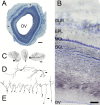
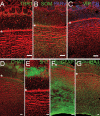

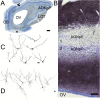
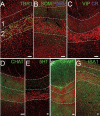
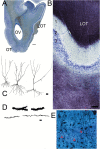
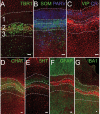
References
-
- Baldwin BA. 1980. Operant studies and preference tests on the role of olfaction and taste in the ingestive behaviour of pigs and ruminants. Fortschr Tierphysiol Tierernahr. (11):36–42. - PubMed
-
- Bekkers JM, Suzuki N. 2013. Neurons and circuits for odor processing in the piriform cortex. Trends Neurosci. 36(7):429–438. - PubMed
-
- Booth W, Signoret J. 1992. Olfaction and reproduction in ungulates. Oxf Rev Reprod Biol. 14:263–301. - PubMed
-
- Booth WD, Baldwin BA. 1980. Lack of effect on sexual behaviour or the development of testicular function after removal of olfactory bulbs in prepubertal boars. J Reprod Fertil. 58(1):173–182. - PubMed
Publication types
MeSH terms
Substances
LinkOut - more resources
Full Text Sources
Other Literature Sources
Miscellaneous

